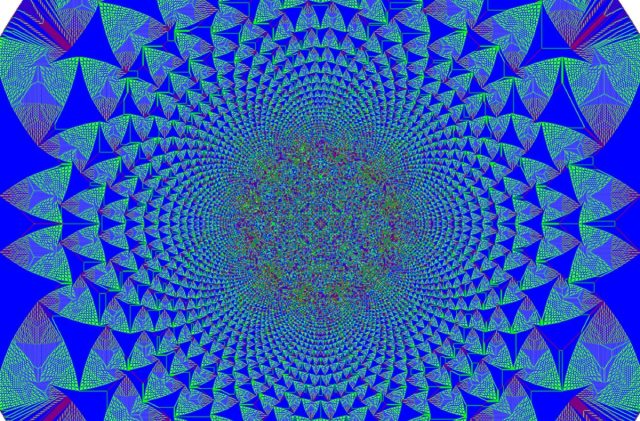The human brain doesn't seem like it would have much in common with how water freezes into ice or heats up into a gas. But over the last decade, evidence has been mounting that the brain as a system functions much like water approaching the critical point of a phase transition. Now a team of Brazilian scientists has found additional evidence in rat brains that this might indeed be the case. The team described its findings in a recent paper in Physical Review Letters.
The notion of so-called "self-organized criticality" dates back to a landmark paper in 1987, when the late Danish physicist Per Bak concluded that nature's exquisite order was the result of a kind of phase transition. That precise moment of transition is colloquially known as the "tipping point" or "critical point."
A brain's the thing
Typically, a classical phase transition only occurs when the temperature and pressure are just right for a given system. Self-organized criticality emerges spontaneously as the result of many local interactions between the many elements of a system, like millions of grains of sand running from the top to the bottom of an hourglass. The pile grows, grain by grain, until it becomes sufficiently unstable that the next grain to drop makes the pile collapse in an avalanche. The base of the pile widens, restoring stability, and the pile-up begins anew, until the sand pile hits the critical point again. Those avalanches follow a so-called "power law," meaning smaller ones happen more often than larger ones.
Bak extended his ideas in a 1996 book, How Nature Works, applying the notion of self-organized criticality to earthquakes, financial markets, traffic jams, biological evolution, how galaxies are distributed in the universe, and the brain. In fact, he annoyed a group of neuroscientists in 1999 when he blithely informed them that he had figured out the fundamental principles behind how the brain works. Much like the pile of sand in an hourglass, he proposed that the brain teeters at that same critical point, a balance achieved by avalanches of electrical activity between neurons at all size scales. In other words, he proposed that electrical activity should follow a power law. The idea is that this critical state is a kind of "Goldilocks zone" that optimizes the transfer and processing of information in the brain while still maintaining stability.

Granted, the brain is not a highly idealized model sandpile, but the concept makes a certain degree of sense. The brain is a complex system that must adapt to constantly changing circumstances, so why shouldn't it have evolved mechanisms to maintain an ideal balance between order and disorder, so to speak? "A brain that is not critical is a brain that does exactly the same thing every minute, or, in the other extreme, is so chaotic that it does a completely random thing, no matter what the circumstances," Dante Chialvo, a neurophysiologist with UCLA and the National Scientific and Technical Research Council in Argentina, memorably told Quanta in 2014. "That is the brain of an idiot."
Signifying nothing?
All this was purely theoretical—and quite controversial—until 1992, when Swedish scientists conducted experiments with grains of rice pressed between glass plates, adding grains one by one and recording the eventual avalanches on camera. As Bak had predicted, there were more smaller avalanches than larger ones, following the telltale power law. In 2003, Indiana University biophysicist John Beggs and several colleagues were the first to demonstrate that slices of a brain's cortex showed evidence of an exponent relation. Add in evidence gleaned from other studies using magnetoencephalography, electroencephalography (EEG) recordings of the interactions between individual neurons, and computer simulations with fMRI imaging data of the brain's resting state, and it starts to look like proponents of the "brains at the tipping point" hypothesis might just have a case.
The biggest issue is what one might call a "fine-tuning" problem: critical states in nature are generally fragile, in that a slight perturbation will move it away from the exact critical point. And the brain is an especially noisy system, so there would be many such perturbations. That's why Beggs and his Indiana University colleague Gerardo Ortiz have since argued that perhaps the brain hovers near, rather than precisely at, the critical point—think of it as more of a "quasi critical" phase space than a traditional tipping point. Similarly, Viola Priesemann of the Max Planck Institute for Dynamics and Self-Organization in Gottingen has argued that the brain operates in a slightly subcritical zone.
Not everyone is convinced. Among the most vocal critics of the brain operating in a critical state is Alain Destexhe, a theoretical neuroscientist at the National Center for Scientific Research (CNRS) in France. Among other concerns, power law distribution isn't sufficient evidence for criticality, since other processes in nature can mimic that signature. In a 2017 paper, he and co-author Jonathan Touboul proposed that the real sign of criticality would be the Read More – Source
[contf] [contfnew] 
Ars Technica
[contfnewc] [contfnewc]







